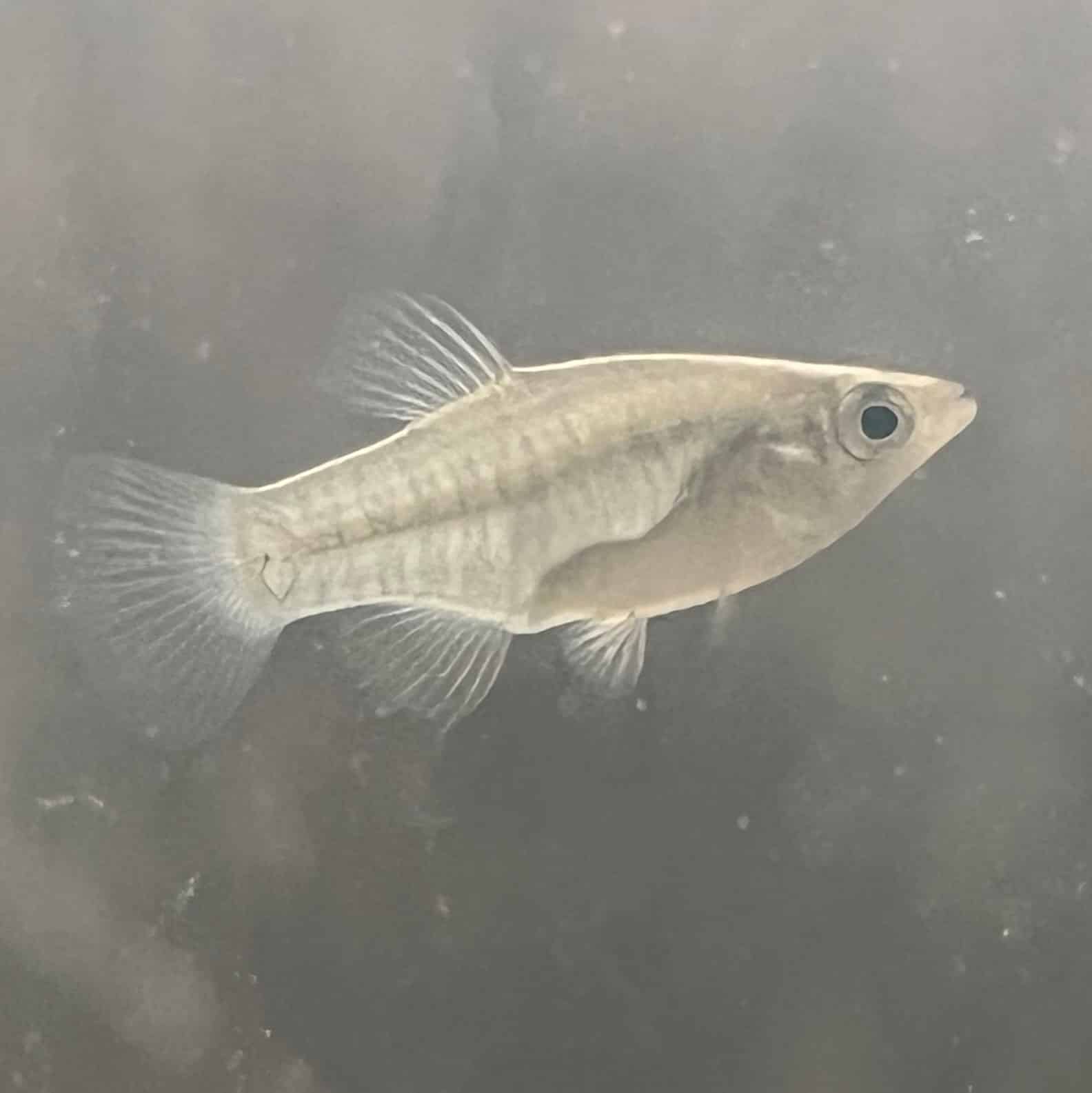Our coastal tidal marshes are home to many interesting aquatic creatures, including a number of small fishes, collectively known as killifish. One of the smallest of these is the Diamond Killifish, aptly named for its diamond shape when viewed from the side.
As with other members of this generic group, it is found in shallow waters associated with tidal marshes across the northern Gulf of Mexico. Its ecology is directly tied to the ebb and flow of water in and out of tidal marshes, where it feeds and breeds.
As a group, killifish typically refer to a variety of egg-laying fish from a number of families that are adapted to ephemeral waters, like isolated pools in deserts and other inland areas, where the presence of water comes and goes. The ecology of these fish includes deposition of eggs that can survive dehydration when water is absent, hatching when water returns.
Tidal marshes emulate a similar cycle of wet (high tide) and not wet (low tide) periods tied to the ebb and flow of tides. Tidal water killifish have adapted a strategy of laying eggs across the surface of marshes where they are exposed to possible dehydration, but less so to potential predators. In reality, the return of water (high tide) in these habitats is predictable and the eggs and fry that hatch are well-adapted to this cycle.
As adult Diamond Killifish begin to breed in early spring, they time their breeding activity to the highest tides of the 28-day lunar cycle – the two “spring” tide periods that occur every 14 days – new moon and full moon tides (each high tide period lasting from 4-5 days). These tides allow these fish to access the entire marsh surface where they seek out the stems of marsh plants or other objects to lay their eggs.
Eggs hatch in about two weeks, corresponding to the return of the next “spring” tides. Once hatched, the tiny fry remain on the marsh surface in small rivulets and other shallow pools in the lower areas of marshes, where they stay out of reach of large predators and can find plenty food to eat. They grow rapidly and soon join adults in the daily migration from low tide areas to the marsh surface at high tides.
That is the life of many estuarine and marine fishes and crustaceans that are adapted to tidal habitats where water comes and goes, yet where there are rich sources of food and space to reproduce safely. Other species of coastal killifish include Gulf Killifish, also known as Bull Minnow, Cocahoe, or Mud Minnow and Longnose Killifish, both much larger than Diamond Killifish and used as bait. Sheepshead Minnow, Bayou Killifish, and Saltmarsh Topminnow are also common.
As for the generic name killifish, its origin is apparently uncertain but may have originated from a Dutch name for small streams (kil). Regardless, these small fishes of our coastal waters live challenging lives associated with the coming and going of tidal water. They may not be as noticeable as larger fish, but they are every bit as important.
Hope to see you in our great outdoors!
Photo by Mark W. LaSalle




